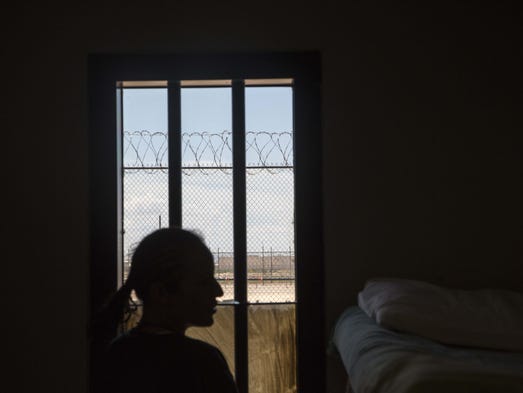
Maria and Flor crossed the U.S. – Mexico border in March 2019 and applied for asylum. Technically, Maria, 23 years old, filed for asylum for herself and her six-year-old niece. Maria and Flor had travelled north from Guatemala, where Flor’s entire family was murdered when Flor was a baby. Maria was, and is, her only living relative. Maria took Flor in and has raised her as her daughter. Maria is the only mother Flor has ever known. Maria’s family was killed this year, and that precipitated the flight north. Maria brought all the formal papers she could lay her hands on. ICE, Immigration and Customs Enforcement, rejected the papers, rejected Maria and Flor as well. Maria was dumped into Eloy Detention Center, in Arizona. Flor was taken to a shelter … in New York City, thousands of miles away. Anita, a woman living in New York, has volunteered to provide a home for Maria and Flor. Volunteers have provided assistance, clergy and faith community members have joined with activists to raise a hue and cry, attorneys both in Arizona and New York have actively represented both Maria and Flor. Despite all this support, Maria was recently again denied parole. ICE provides no reason. Deeper into the landscape of no-reason, were Maria or Maria and Flor to be deported, there are no assurances that Maria would know Flor’s whereabouts. Again, Maria is 23 years old; Flor is 6 years old. Find a six-year and just look at her, and you’ll understand what this theater of cruelty is all about. As one local reverend said, “It is beyond cruel.” What is beyond cruel? This.
Maria sits, waits, tries to organize her life and Flor’s life, in Eloy Detention, the place where Raquel Calderon de Hildago, also Guatemalan, hanged herself … or was sentenced to hang herself; Eloy, the detention center that often has had both more deaths in custody and more suicide and suicide attempts than any other detention facility; Eloy, the site of repeated women’s hunger strikes. Why is Maria in Eloy, rather than `out in the world’ with her daughter-niece Flor? Why is anyone in Eloy?
Despite the State of Abandonment, Maria insists that she does not feel abandoned, because, she says, “I have the support of lots of people. I’m not alone”. Abandonment is the obverse of democracy. Maria’s understanding of community, solidarity, hope, that is what democracy looks like.
#FamiliesBelongTogether #FreeMaria
(Image Credit: Franziska Barczyk / The Guardian)

